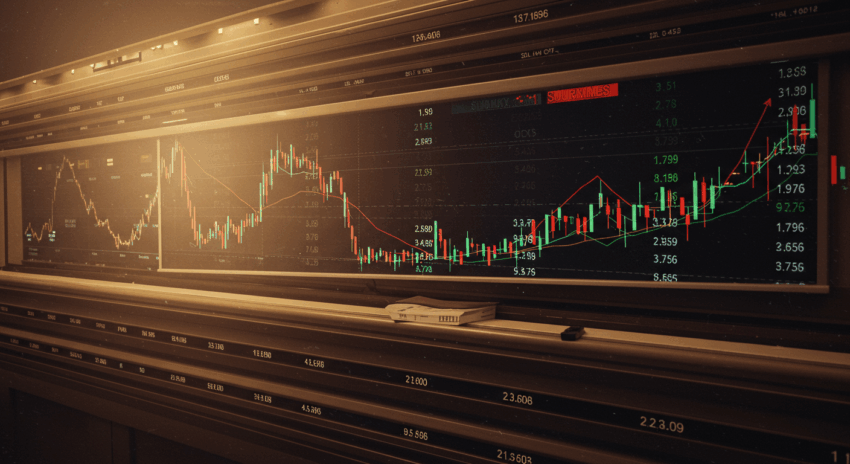ECONOMY
European Central Bank Leads the Way with an Interest Rate Cut
This week, the European Central Bank (ECB) made a significant move by cutting its key interest rate for the first time in nearly five years. Think of an interest rate as the cost of borrowing money. When the central bank lowers it, it becomes cheaper for businesses to take out loans for expansion and for individuals to get mortgages or car loans. The ECB’s decision to lower its rate from a record high of 4% to 3.75% is an attempt to stimulate economic activity across the Eurozone. This move is particularly noteworthy because other major central banks, like the U.S. Federal Reserve, are still holding their rates steady due to concerns about persistent inflation. The ECB is essentially betting that inflation is under enough control to begin easing borrowing costs, a decision that will be watched closely by the rest of the world.
U.S. Labor Market Shows Unexpected Strength
Across the Atlantic, the latest jobs report from the United States painted a surprisingly robust picture of the economy. Far more jobs were added in May than economists had predicted, and wages also grew at a healthy pace. While this sounds like great news—and it is for job seekers—it complicates the picture for the Federal Reserve (the U.S. central bank). A strong labor market means people have more money to spend, which can keep prices high and make inflation harder to control. As a result, this strong report makes it less likely that the Fed will cut its own interest rates anytime soon. The central bank’s main goal is to cool down inflation without causing a recession, and this data suggests the economy might still be running a bit too hot for them to ease up on their policies just yet.

FINANCE
The AI Boom Catapults Nvidia to New Heights
The artificial intelligence revolution continues to reshape the financial landscape. This week, chipmaker Nvidia saw its market value surge past the $3 trillion mark, briefly overtaking Apple to become the world’s second-most valuable public company. A company’s market capitalization (or market cap) is the total value of all its shares combined, and it’s a key measure of its size and influence. Nvidia’s incredible rise is fueled by the massive demand for its specialized computer chips, which are the engine behind most advanced AI systems. This milestone highlights a major shift in the tech world, where AI capabilities are now seen as one of the most valuable assets a company can possess, driving immense investor interest and reshaping stock market hierarchies.
The Return of the Meme Stock Frenzy
The phenomenon of meme stocks has roared back into the headlines. Shares of companies like GameStop (GME) experienced extreme volatility after a key figure from the original 2021 saga resurfaced on social media. Meme stocks are shares of a company that have gained a cult-like following online, with their prices often driven by social media hype rather than the company’s actual financial performance. This latest surge saw GME’s stock price double in a short period before falling again, all based on speculation and online chatter. It serves as a stark reminder of the power of retail investors coordinating online and the significant risks associated with investing based on hype rather than fundamental analysis.
INVESTMENTS
Major Stock Indices Reach New Records Amidst Narrow Leadership
Investor optimism pushed major U.S. stock indices, like the S&P 500 and Nasdaq Composite, to new all-time highs this week. However, a closer look reveals that this rally is being driven by a surprisingly small number of mega-cap technology companies. This is a concept known as market concentration or narrow market breadth. While the overall index is up, many of the other 490+ companies in the S&P 500 are not performing nearly as well. For investors, this means that a significant portion of their portfolio’s performance might be tied to the fortunes of just a few dominant players, particularly those in the AI sector. This concentration presents both opportunities and risks, as any downturn in these key stocks could have an outsized impact on the entire market.
Rate Cut Hopes Diminish, Impacting Bond Markets
Following the strong U.S. jobs report, investors quickly re-evaluated their expectations for when the Federal Reserve might begin to cut interest rates. Before the report, many were betting on a rate cut as early as September. Now, the consensus is shifting, with many believing a cut might not happen until later in the year, if at all. This change in sentiment has a direct impact on the bond market. When the likelihood of a rate cut decreases, bond yields (the return an investor gets) tend to rise. This is because existing bonds become less attractive compared to new bonds that might be issued at higher rates in the future. This repricing shows how interconnected economic data and investment markets are, with a single report capable of shifting billions of dollars in investment strategy overnight.
Frequently Asked Questions (FAQ)
- Why would a strong jobs report be considered a ‘problem’ for the Federal Reserve?
It’s not a problem for the economy itself, but it complicates the Fed’s specific goal of fighting inflation. The Fed’s primary tool is raising interest rates to slow down spending and cool the economy. A very strong jobs report, with high job growth and rising wages, indicates the economy is still running hot. This means consumers have more money to spend, which can keep upward pressure on prices (inflation). Therefore, the Fed may decide to keep interest rates higher for longer to ensure inflation is fully under control before it considers cutting rates. - What’s the difference between investing based on hype versus fundamentals?
Investing based on fundamentals involves analyzing a company’s financial health—its revenue, profits, debt, and growth prospects—to determine its long-term value. It’s a research-intensive approach. Investing based on hype, as seen with meme stocks, often ignores these fundamentals. Instead, it’s driven by social media trends, speculation, and the fear of missing out (FOMO). While hype can lead to rapid, short-term gains, it is extremely risky because the stock’s price is detached from its real value, making it highly susceptible to sudden and severe crashes.



